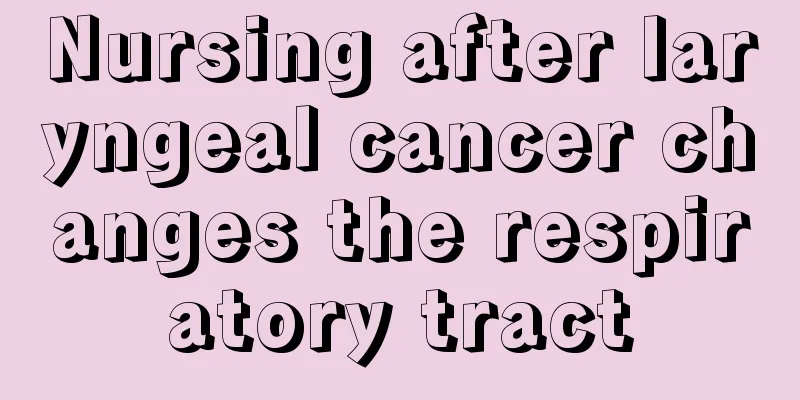Which is more harmful, perming or dyeing hair? The harm of both cannot be ignored

|
Female friends usually like to dye their hair or perm their hair to make themselves more beautiful, but few people realize the dangers of hair dyeing. Both of them are extremely harmful and can cause irreversible harm not only to the hair but also to their own health. 1. The principles and harms of perming The ammonium sulfonic acid (alkaline) in special perm solutions enters the cortex through the hair scales on the surface of the hair, changing the protein chain structure of the hair to form curls. Perming generally starts with a reducing chemical solution to break up the small springs of cysteine, breaking the sulfhydryl bridge bond of cysteine and becoming two cysteines. At this time, the amino acid chain links of the hair loosen and can be manipulated by people, curling into a certain waveform. Then apply fixative to make the cysteines that break the small springs combine in pairs nearby to form new springs and fix the hairstyle. During the perming process, the alkaline components and oxidation in the solution will damage the scales on the surface of the hair. Leaving the internal structure of the hair unprotected will cause the loss of internal moisture and nutrients, which is harmful to the hair, scalp and hair follicles. It will more or less denature the hair's keratin, making the hair prone to yellowing, brittle, dull and inelastic. Pregnant women should not perm their hair because it will affect the health of the fetus. Little girls have delicate scalps and perming can easily break their scalps and cause bacterial infections. People with dry scalp should not perm their hair often. After perming our hair, there will be a peculiar smell that is difficult to wash off, which is also related to this thioglycolic acid substance. The safety of thioglycolic acid-based hair perming agents has always been a concern for people. According to research by Hualis Hair Restoration Experts, it is not only irritating and allergic, but may also damage the hematopoietic system. More seriously, it may induce diseases such as bladder cancer, breast cancer, lymphoma, and leukemia. 2. The principles and harms of hair dyeing Hair dyeing uses the alkaline ingredients in the dye to open the hair cuticles on the surface of the hair (the cuticles on the hair open when they encounter alkali), allowing the artificial pigment to enter the cortex of the hair and combine with part of the natural pigment to form the desired color. When dyeing hair, ammonia in the dye has a strong destructive effect on the hair scales on the surface of the hair. If not properly maintained, it will cause the hair scales to fall off, moisture loss, roughness and brittleness, lack of luster and inelasticity. Many people are troubled by dyed hair that lacks luster or has difficulty maintaining color. Experts warn that no matter what kind of hair dye or its products are used, dyed hair generally contains toxic aromatic chemicals. Long-term use may damage the body's hematopoietic system or cause fetal malformations in pregnant women. In mild cases, it can also cause dermatitis, skin redness, swelling, itching, ulcers, etc. For the sake of health, try to dye your hair less or not at all. Natural beauty is the real beauty. Many people have allergic reactions to chemical solutions used for hair dyeing and perming, such as rashes, dizziness, and even redness and swelling of the skin. Therefore, special attention should be paid to prevent this allergic phenomenon. You can try a little bit on the skin first. If redness, swelling or allergy occurs, do not perm or dye it. Most of the hair dyes currently sold on the market contain toxic chemicals such as "paraphenylenediamine". If the human body is exposed to and absorbs hair dyes for a long time, it is easy for benzene organic substances to enter the capillaries through the scalp and circulate to the bone marrow with the blood. Long-term and repeated exposure will cause stem cells to become malignant and lead to leukemia. In addition, if the skin is broken when dyeing hair and cannot heal, it may also cause squamous cell carcinoma of the skin. Therefore, citizens should dye their hair as little as possible. In addition, people with skin allergies or skin ulcers (especially the skin on the head) should not dye or perm their hair. Patients with high blood pressure, heart disease, asthma and other diseases should not dye their hair. |
<<: Is it better to wash your hair in the morning or at night? Are you washing it correctly?
Recommend
What can I add to a mattress to make it harder
Many friends with bad waists don’t like sleeping ...
What are the disadvantages of wearing underwear when sleeping at night?
Nowadays, many young people wear underwear when t...
What are the dietary principles for patients with kidney tumors?
Kidneys are the foundation of everyone's vita...
Experts explain the three most commonly used treatments for gastric cancer
Choosing the right treatment for gastric cancer i...
Smoking is the main culprit of lung cancer
In life, the causes of lung cancer can occur in a...
Thyroid nodule surgery recovery period
In fact, everyone should know that thyroid nodule...
Five tips to help you relieve social phobia
Social phobia is not scary. In fact, at least sev...
What are the pros and cons of drinking tea
I believe that many of my friends drink tea in th...
Is the smell of disinfectant harmful to people?
Since there are a lot of bacteria in our daily li...
Moxibustion treatment method for osteosarcoma
As we all know, osteosarcoma is difficult to cure...
How to care for thyroid cancer
How should we care for patients with thyroid canc...
What are the contrast agents for fallopian tubes
Hysterosalpingography is a method to check whethe...
Why do we need to draw blood to check for cervical cancer
By drawing venous blood for testing, we can find ...
What can be soaked in vinegar to improve sexual performance
Vinegar is a common condiment in our lives and ha...
Eating sweet food after taking bitter medicine is very harmful to the spleen
When older people hear about Chinese medicine hea...









